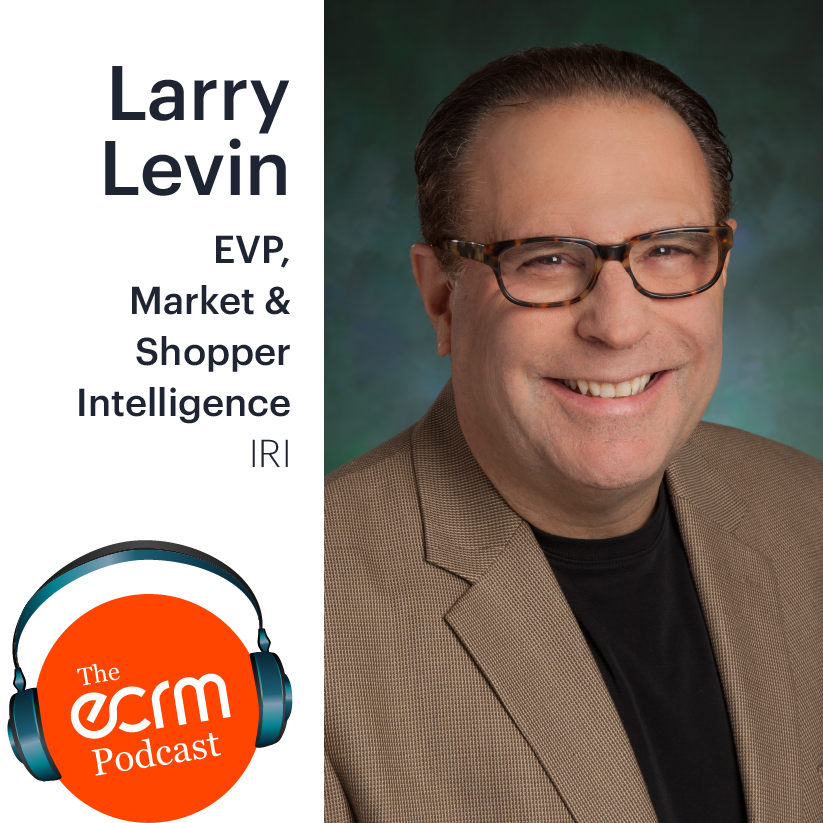Retailers, Brands Must Have an ‘Empathetic Ear’ for Shopper Needs: IRI 7/15/2020
 With the myriad challenges the industry has faced over the past few months, empathy is probably the most important quality a retailer and brand can demonstrate when it comes to their shoppers. Now more than ever, we need to put ourselves in their shoes and develop not only products, but solutions that will help make their lives safer, easier and as close to a sense of “normalcy” as we can make it.
With the myriad challenges the industry has faced over the past few months, empathy is probably the most important quality a retailer and brand can demonstrate when it comes to their shoppers. Now more than ever, we need to put ourselves in their shoes and develop not only products, but solutions that will help make their lives safer, easier and as close to a sense of “normalcy” as we can make it.
During my interview with Larry Levin, EVP of Market & Shopper Intelligence for IRI Worldwide, we discuss how consumers’ needs and shopping behaviors have changed over the past several months as the pandemic continues to fluctuate from one segment of the country to another, and the lasting impact it will have on how, when and where they shop.
We also discuss how retailers and brands can best accommodate these changes. But at the root of each of these recommendations, is the ability to have what Larry refers to as, an “empathetic ear.”
Listen to the podcast (watch the video below)
KEY TAKEAWAYS
A ‘Wait and See’ Attitude: While some consumers are going to rush back into their pre-Covid shopping habits quickly, most -- approximately two-thirds of those surveyed by IRI -- will take a “wait and see” approach, evaluating what happens with the first groups of shoppers to jump into the trenches and then making their decisions based on the outcome.
Long-term Planning: People are thinking about how they are going to make ends meet long-term, as they are expecting the economic recovery to take quite a while.
The Role of E-Commerce and Digital: With many people still reluctant to spend more time in stores than they have to, digital will play an increasing role in their shopping, both from an ecommerce standpoint, but also as a key means for retailers and brands to engage with shoppers. People are ordering more of their food and household staples online, whether for delivery or curbside pickup, and when they are in the store, they are targeting specific aisles to shop. So brands that are not in these key aisles will need to get creative with impulse displays, particularly at the checkout, and up their digital engagement to stay top-of-mind. This is particularly the case for emerging and impulse brands.
Product Innovation Takes Off: The pandemic has driven tons of product innovation, as brands developed new products or packaging sizes to accommodate consumers pantry-filling needs, such as 36-count cases of beer or lay-down bags of cereal. With the recent surge in cases and a potential second wave in the fall, consumers will continue to pantry-stock so they are not caught flat-footed again.
One-Stop Shopping: Many channels, particularly the food retail channel, are enhancing their one-stop shopping experience, expanding into additional categories so consumers can take care of more needs in a single trip, even if some products may cost more.
Center Store Revival: The pantry-filling of frozen or shelf-stable goods is driving a revival of the center store, as shoppers rediscover healthy foods within the department. They continue to mine the center store to stock up for the long-haul.
Cooking-at-Home Solutions: According to IRI, prior to the pandemic, approximately one-quarter of the population cooked 90+ percent of their meals at home. Now, more than half are cooking 90+ percent of meals at home. But the challenge of being creative in the kitchen has opened an opportunity for manufacturers and retailers to provide meal prep solutions and education that will drive a deeper engagement. And with travel restrictions in place (regardless of whether mandated or voluntary), solutions for “bringing the party home” will be much in demand, particularly during summer weekends and holidays.
Store Brands Opportunities: Price increases have opened up opportunity for more private label opportunities, and retailers and brands should rethink their product lineups and strategies to accommodate tight pricing.
Premiumization: On the flip side, as consumers increasingly eat more meals at home, retailers and brands have the opportunity to provide premium “restaurant quality” meals that can be purchased for at-home consumption at a fraction of the price of dining out. For example, during the last recession PF Chang’s take-home meals, which sold at $11 for a two-person serving, may have been premium compared to their competitive set on the frozen food aisle, but they were a bargain compared to eating at a restaurant.
Brand-Shifting: Covid has led to the introduction of new brands to consumers in situations where they were shopping a category and their preferred brand wasn’t available. This has led to a two-way fight between some incumbents and emerging brands. For the incumbents, they need to figure out how to win back that shopper. For the new brands, they need to turn that initial trial into a longstanding relationship.
Midweek shopping: The past few months have seen a steady growth of midweek shopping, both because more consumers are either not working or working from home, but also because they are seeking to avoid crowded stores.

